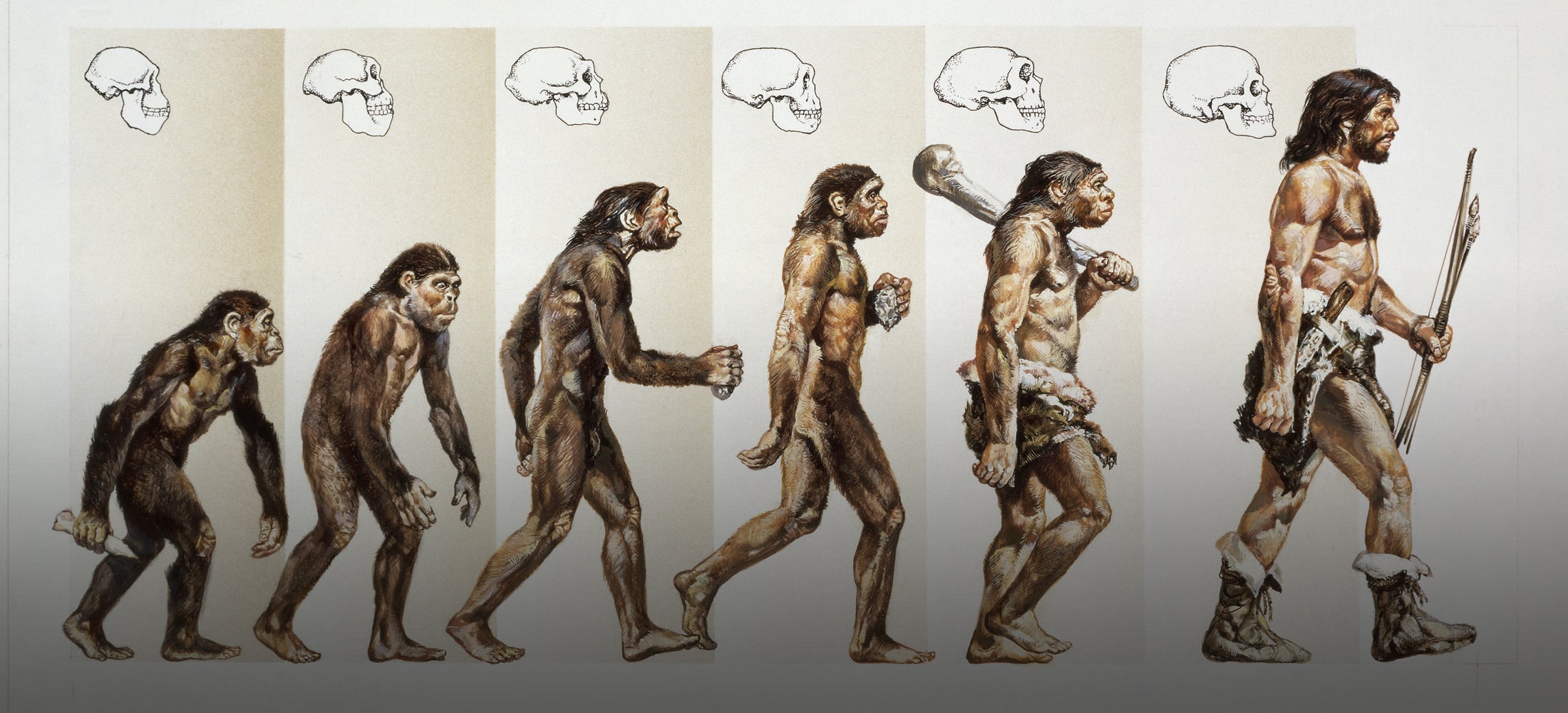Human evolution is a captivating tale of adaptation, survival, and transformation. Over millions of years, the journey from our distant ancestors to modern Homo sapiens showcases the remarkable changes that have taken place in our anatomy, behavior, and cognition. This gradual process has been driven by a complex interplay of genetic mutations, environmental pressures, and cultural innovations.
The story begins around 6 to 7 million years ago with the emergence of our earliest primate ancestors, the common ancestors of both humans and modern apes. These early primates inhabited the lush forests of Africa, adapting to arboreal life and developing grasping hands and stereoscopic vision that aided in depth perception and the ability to manipulate objects. Over time, shifts in climate and habitat led to changes in the environment, prompting these creatures to adapt to new conditions.
Around 4 million years ago, the first hominins appeared. These were bipedal primates that walked on two legs, freeing their hands for tool use and allowing them to cover larger distances more efficiently. Ardipithecus ramidus, an early hominin, exhibited adaptations to both tree-dwelling and bipedal movement, showcasing the transitional nature of this phase of evolution.
The Australopithecus genus, including famous specimens like Lucy (Australopithecus afarensis), provides a crucial bridge between ancestral primates and the genus Homo. These hominins continued to walk upright, displaying adaptations in their hips, legs, and feet that were more conducive to terrestrial bipedalism. Although their brains were relatively small, evidence of tool use and cultural behaviors emerged during this time, highlighting the gradual development of cognitive abilities.
Around 2 million years ago, the Homo genus emerged. Homo habilis, one of the earliest members, was characterized by a slightly larger brain and the use of stone tools. This marked the beginning of a significant shift towards greater reliance on culture and technology to navigate the challenges of the environment. Homo erectus, a later species, showcased an increased brain size and a more advanced tool-making capability. They were also the first hominins to leave Africa, spreading to various parts of the world and adapting to diverse environments.
Approximately 300,000 years ago, Homo sapiens, our species, made their appearance. What sets Homo sapiens apart is their significantly larger brain, complex language, and intricate cultural practices. This cognitive revolution allowed for advanced communication, cooperation, and the development of intricate tools and symbolic art. As a result, Homo sapiens were able to thrive in a wide range of habitats and climates, eventually becoming the dominant species on Earth.
The journey of Homo sapiens was marked by numerous technological and cultural revolutions. The agricultural revolution, around 10,000 years ago, marked the transition from hunting and gathering to farming and settled societies. This shift led to the growth of human populations, the development of cities, and the establishment of complex social structures.
The industrial revolution, which began in the late 18th century, brought about rapid advancements in manufacturing, transportation, and technology. This era reshaped human societies, leading to urbanization and changes in labor patterns. It also marked the beginning of significant environmental and ecological impacts as human activities began to alter the planet on a global scale.
In recent times, the technological revolution, driven by the advent of computers, the internet, and artificial intelligence, has transformed nearly every aspect of human life. Communication, information access, and global connectivity have reached unprecedented levels, reshaping economies, cultures, and social interactions.
Throughout this evolutionary journey, humans have exhibited remarkable adaptability and resilience. Our ability to innovate, cooperate, and solve problems collectively has been key to our survival and success. However, this success has also raised critical questions about the sustainability of our current trajectory. As we continue to exert a profound influence on the environment and the planet’s resources, concerns about climate change, biodiversity loss, and ethical dilemmas regarding technology and genetic manipulation have come to the forefront.
In conclusion, the evolution of humans is a testament to the power of adaptation, learning, and cultural development. From humble primate origins to the complex societies and technologies of today, the journey of human evolution showcases the interplay between biology, environment, and culture. As we reflect on our past and confront the challenges of the present and future, understanding our evolutionary history provides insights into our potential to shape the trajectory of our species and the world we inhabit.

